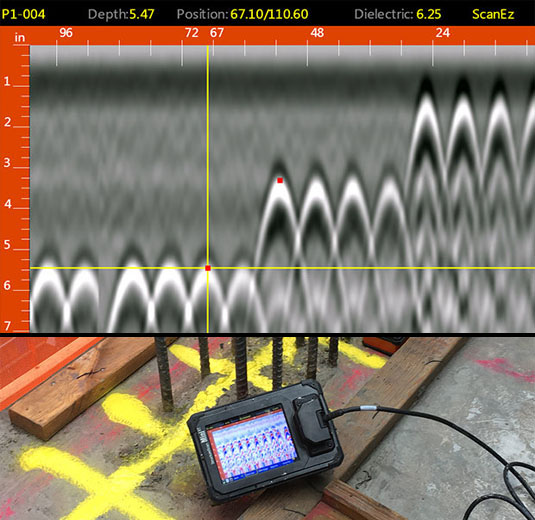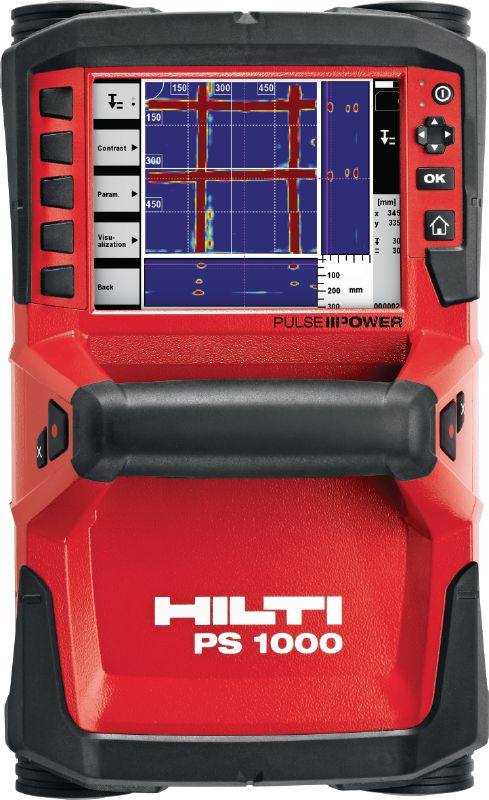Discover Hidden Obstacles with RainierGPR Concrete Scanning Technology
Discover Hidden Obstacles with RainierGPR Concrete Scanning Technology
Blog Article
The Value of Specific Concrete Scanning in Detecting Underground Hazards
In the realm of construction and framework development, the significance of specific concrete scanning can not be overemphasized. Underneath the relatively strong ground lie intricate networks of energies, pipelines, and various other subsurface structures that are typically invisible to the nude eye. The capacity to accurately find and map these below ground hazards is not simply a matter of benefit however a critical element of guaranteeing the safety and security of both construction employees and the stability of the task itself. By releasing advanced scanning modern technologies and methods, experts can uncover covert risks, stop costly damages, and eventually lead the method for smoother and more secure building undertakings.
Advanced Scanning Technologies for Discovery
Advanced radar systems are transforming the area of below ground detection by giving unequaled accuracy and performance. These innovative scanning modern technologies use ground-penetrating radar (GPR) to produce comprehensive pictures of subsurface frameworks, providing insights into what exists beneath the surface with remarkable clearness. By producing high-frequency pulses into the ground and measuring the reflections, radar systems can determine variants in product structure and identify below ground risks such as wires, spaces, and pipelines.
Among the crucial advantages of these advanced radar systems is their non-invasive nature, permitting for extensive evaluations without triggering damage to the existing structures. This not only guarantees the safety of the surrounding setting but also decreases the need for expensive repairs or interruptions to continuous building and construction tasks. Additionally, the real-time data offered by these scanning modern technologies enables quick decision-making and boosts total project effectiveness.
Importance of Subsurface Mapping

Accurate subsurface mapping assists in stopping costly problems to existing below ground infrastructure, minimizing the threat of accidents, and preserving job timelines. It allows job managers to make informed choices concerning website planning, tools deployment, and resource appropriation. Furthermore, subsurface mapping enables much better coordination amongst various groups dealing with a job and assists in following regulatory demands associated with underground utility detection.
Mitigating Threats in Building Jobs
Efficient threat mitigation strategies are vital for ensuring the success and safety of building and construction projects. Recognizing and dealing with potential threats before they intensify is important in preserving task timelines, budgets, and general quality. One vital element of mitigating threats in construction jobs is comprehensive planning and analysis at the preliminary stages. Performing comprehensive website surveys, consisting of specific concrete scanning for underground risks, can assist in determining possible problems beforehand. Using innovative technologies like ground-penetrating radar and electro-magnetic induction can help in finding energies, rebar, or other obstructions that may present dangers throughout building and construction.
Furthermore, establishing clear interaction channels among all job stakeholders and making certain stringent adherence to safety and security methods are vital components of danger reduction. Routine examinations, quality assurance actions, and monitoring of work development can help in recognizing and addressing any kind of emerging risks without delay. Furthermore, having contingency strategies in area for unforeseen obstacles can considerably decrease the influence of disruptions on the job. By proactively carrying out robust danger reduction techniques, construction jobs can minimize hold-ups, expense overruns, and security cases, ultimately leading to effective project outcomes.

Preventing Pricey Problems and Hold-ups
To decrease monetary losses and task obstacles, efficient methods must be implemented to stop costly damages and delays in construction tasks. One vital way to attain this is by conducting extensive concrete scanning before any type of excavation job starts. By using advanced scanning technologies such as ground-penetrating radar (GPR) and electro-magnetic induction, building teams can precisely detect below ground threats like rebar, channels, and other energies. Recognizing these obstructions beforehand assists in preparing the task design much more efficiently and staying clear of prospective problems throughout excavation.
Furthermore, buying training programs for construction workers on the value of concrete scanning and secure excavation techniques can dramatically minimize the danger of crashes and delays. Clear communication networks between job managers, engineers, and on-site he has a good point employees are likewise important to make certain that every person is conscious of the potential hazards and follows the essential protocols to stop costly problems. By prioritizing aggressive procedures like concrete scanning and advertising a culture of security and awareness, building tasks can lessen the monetary effect of unanticipated below ground blockages and prevent costly delays.
Ensuring Security of On-Site Personnel
By prioritizing positive procedures such as comprehensive training programs and clear communication channels, construction jobs can make sure the security of on-site employees amidst the possible hazards discovered with concrete scanning. Correct training furnishes workers with the understanding and skills required to navigate construction sites safely, specifically when dangers are determined via scanning procedures. Training should cover hazard acknowledgment, emergency situation treatments, and the proper application of individual safety devices to mitigate dangers properly.
Furthermore, developing clear communication channels is crucial for disseminating information concerning identified hazards without delay. This makes certain that all on-site personnel recognize possible risks and can take required preventative measures to stay clear of mishaps. Routine security briefings, tool kit talks, and constant updates pertaining to scanning results assistance keep everybody informed and proactive in maintaining a secure workplace.
Additionally, applying stringent adherence to safety protocols and regulations, performing regular safety audits, and promoting a society of security consciousness amongst employees are crucial parts in ensuring the wellness of on-site employees throughout building jobs - RainierGPR Concrete Scanning. Proactive precaution not just secure workers from harm however additionally add to the total success and performance of the job
Final Thought
Making use of sophisticated scanning innovations and subsurface mapping helps mitigate risks in building jobs, stopping pricey damages and delays. It is important for building companies to focus on the use of precise scanning methods to reduce potential dangers and make sure a smooth building and construction procedure.

By proactively implementing durable risk reduction approaches, building and construction projects can decrease hold-ups, expense overruns, and security occurrences, inevitably leading to effective job end results. - RainierGPR Concrete Scanning
To minimize monetary losses and task problems, efficient methods need to be carried out to protect against expensive problems and hold-ups in construction tasks. By prioritizing positive measures like concrete scanning and promoting a society site of safety and understanding, building and construction projects can reduce the monetary effect of unforeseen underground blockages and useful content prevent expensive delays.
By prioritizing aggressive actions such as comprehensive training programs and clear interaction networks, building and construction jobs can ensure the safety of on-site employees amid the prospective threats discovered with concrete scanning. Utilizing advanced scanning modern technologies and subsurface mapping helps mitigate risks in building tasks, stopping pricey damages and hold-ups.
Report this page